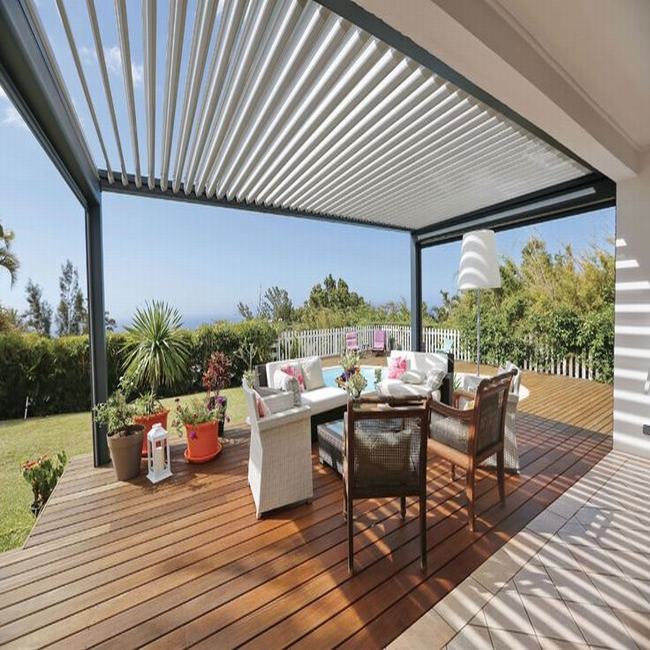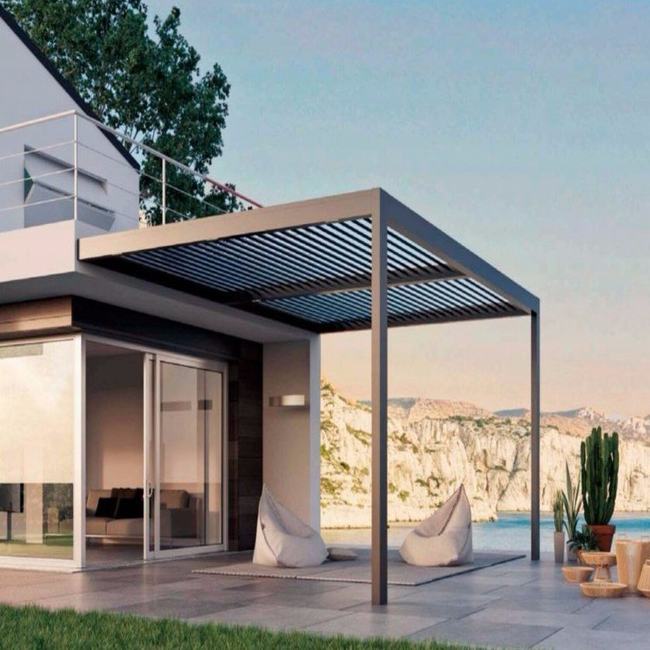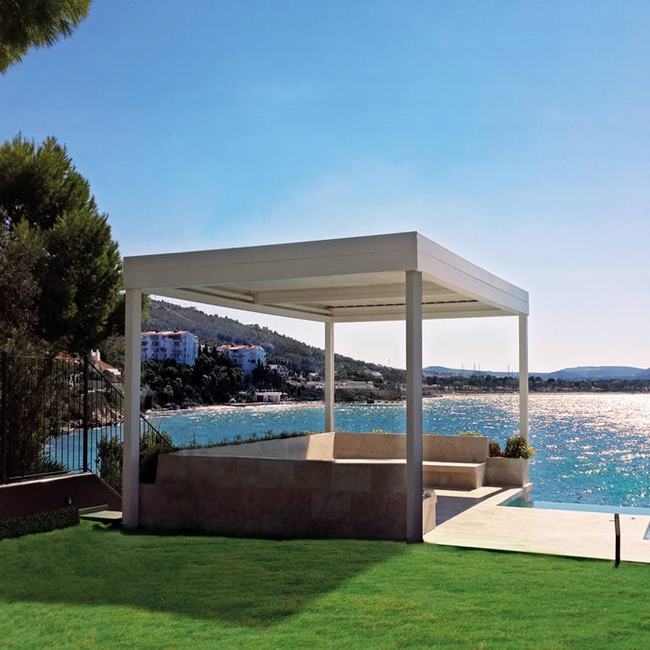Retractable roof systems are innovative architectural features that provide flexibility in controlling the amount of sunlight, ventilation, and weather protection in a space.
Retractable Roof Systems
Retractable roof systems are innovative architectural features that provide flexibility in controlling the amount of sunlight, ventilation, and weather protection in a space. These systems consist of motorized roofs that can be opened or closed as desired, allowing for seamless transitions between indoor and outdoor environments.
The primary purpose of a retractable roof climatic pergola system is to offer a versatile solution for spaces that need to adapt to changing weather conditions. By opening the roof, natural light can flood into the area, creating an open and airy atmosphere. This is particularly beneficial for spaces such as stadiums, atriums, courtyards, and outdoor event venues, where a balance between the comfort of an indoor setting and the benefits of an outdoor experience is desired.
There are several types of retractable roof systems available, including:
-
Retractable Fabric Roofs: These roofs are made of durable and weather-resistant fabrics that can be extended or retracted using a motorized system. They provide effective protection against sun, rain, and wind while allowing natural light to filter through.
-
Louvered Roofs: Louvered roof systems consist of adjustable horizontal slats that can be angled to control the amount of sunlight and airflow. They offer precise control over the environment, allowing occupants to enjoy the benefits of both an open and closed roof.
-
Folding Panel Roofs: Folding panel roofs are composed of multiple panels that can be folded and stacked neatly when the roof is opened. This design offers a clear, unobstructed view when the roof is retracted, providing an immersive outdoor experience.
-
Sliding Roofs: Sliding roof systems utilize tracks and motorized mechanisms to slide the roof panels horizontally, creating a wide opening. This design is commonly used in large-scale applications such as stadiums and exhibition halls.
Retractable roof systems are often equipped with advanced features and technologies to enhance their functionality and user experience. Some common features include:
-
Motorized Operation: Retractable roofs are typically operated with the help of electric motors, allowing for smooth and effortless opening and closing. They can be controlled through various methods such as wall-mounted switches, remote controls, or even automated systems that respond to weather conditions.
-
Weather Sensors: Many retractable roof systems are equipped with weather sensors that detect changes in temperature, wind speed, and precipitation. These sensors can automatically adjust the roof position to provide optimal protection and maintain a comfortable environment.
-
Integrated Lighting and Heating: Some retractable roof systems incorporate integrated lighting fixtures and heating elements. This allows the space to be illuminated during the night or in darker conditions and provides warmth on cooler days, extending the usability of the area.
-
Energy Efficiency: To minimize energy consumption, retractable roof systems can be designed with energy-efficient materials and insulation. This helps to regulate indoor temperatures and reduces the reliance on heating or cooling systems, resulting in energy savings.
In addition to their functional benefits, retractable roof systems can also contribute to the overall aesthetic appeal of a structure. They offer architects and designers the opportunity to create dynamic and visually striking spaces that seamlessly integrate indoor and outdoor environments.
Overall, retractable roof systems provide a flexible and adaptable solution for a wide range of applications. They offer the ability to transform spaces according to weather conditions and user preferences, enhancing the comfort and usability of both indoor and outdoor areas.




